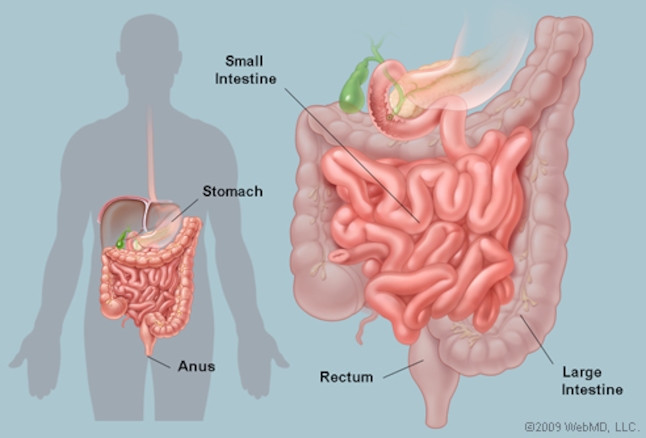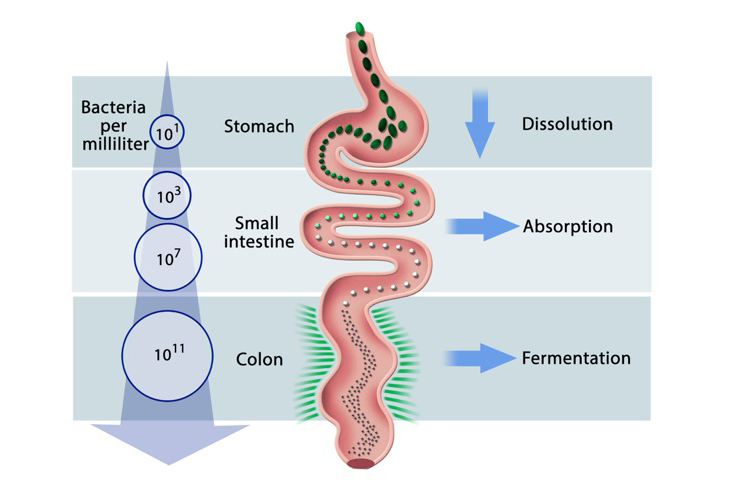JAN 23
From Alfino
Jump to navigationJump to search
Contents
- 1 2. JAN 23: Unit 1: Food, Health, and Nutrition
- 1.1 Assigned Work
- 1.2 In-Class
- 1.3 Using the NSP model to think about dietary design and dietary goals
- 1.4 Visual Aids for thinking about your Microbiota
- 1.5 Sylvie Gilman, "Microbiota: The Amazing Powers of the Gut"
- 1.6 Sonnenbergs, C 1, "What is the Microbiota and Why Should I Care?"
- 1.7 Some implications of Microbiome research
2. JAN 23: Unit 1: Food, Health, and Nutrition
Assigned Work
- Sonnenbergs, C 1, "What is the Microbiota and Why Should I Care?" (26)
- Read Nutrition, Satisfaction, Practicality and Dietary Change. At least up to, "Designing your diet with NSP.
- View this movie on the Microbiome:
- Microbiota: The Amazing Gut. 2019. Sylvie Gilman. "Hidden deep in our intestines, 100,000 billion bacteria are keeping us healthy by producing a range of molecules. Although their names may be perplexing: Fecali bacterium, Roseburia, Akkermansia mucinifila, Eubacterium halli, as well as being invisible to the naked eye, they could revolutionize the future of medicine. That is, if our modern lifestyle doesn't wipe them out first." On Amazon Prime. [1]
- If you've never seen "Food INC", please plan to watch it some time. A copy is in the shared folder.
In-Class
- Review of 1st Day Food Survey
- NSP segment
Using the NSP model to think about dietary design and dietary goals
- Working from the wiki document Nutrition,_Satisfaction,_Practicality_and_Dietary_Change we will look at some of the interactions of N, S, and P.
Visual Aids for thinking about your Microbiota
Sylvie Gilman, "Microbiota: The Amazing Powers of the Gut"
- Opening scene: Birth of a child. We are colonized at birth.
- Microbiota research -- stools. Sequencing technology. The microbiome is the collective 100,000 billion. More than # of cells in your body. Why? (extended genome hypothesis -- example Vitamin C)
- Meet the Sonnenbergs! 5:10 - Microbes manufacture compounds, drugs for us. Digestion, disease protection, vitamin production, brain effects (serotonin). Analogy to a forest.
- Effects of modern diet - less genetic variety. More thinning. Switches to African aboriginal eaters. Jeff Leach, “Dr. Shit”. Hudza in Tanzania. 2x diversity of gut microbes. Amazon study, also. 50% more diverse. Ancestral lifestyles maintain microbiome diversity.
- 14:15 — effects of antibiotics. Can cause extinction of species. Like a bomb. Mouse studies - even short courses of antibiotics can affect metabolism — weight gain. Immune system changed. Asthma. Effects on young mice more profound. Possible hypothesis: early exposure < 6 months predicts obesity and asthma by age 7.
- 18:14 — Caesarean births. More research by Maria Gloria Dominguez-Bello, Rutgers. New practice of feeding c-section babies with mix of vaginal germs.
- Back to Hudza — health of gut depends on health of environment around us. high fiber diet may be a variable. 22:30. What is effect of low fiber diet on individual and generations? Short chain fatty acids SCFAs (also discussed in Sonnenberg reading. Erica Sonnenberg — mouse study of low fiber diet over 4 generations. Loss of 1/2 of diversity.
- 25:05 — Effects of food additives: Emulsifiers in industrial ice cream and other industrial foods. E433 and E466 - Two widespread emulsifiers in industrial foods (ice cream, salad dressings, candy). Mouse studies again - loss of diversity and thinning of gut mucus. 28:05. Produces intestinal inflammation, obesity, and type 2 diabetes. 27:55 - cool mouse gut cross section showing mucus layer! >anxiety! (Note how this affects your perception of the supermarket).
- Obesity research suggest microbiota differences. 32:26 - Study: Same diet, different outcomes, correlated with MB diversity.
- Inflammatory bowel disease — also Crone’s disease. Absence of Faecalibacterium prausnitzii (FP) implicated. More mouse studies. FP has protective effect. Edge of research: Can we add missing bacteria to remedy these conditions?
- Fecal transplants 37:30. Clostridium difficile infection causes 30,000 deaths a year. Often following heavy antibiotic treatment. High cure rate >90%.
- 41:30 Fecal Bank. Open biome, USA. Very selective 3%!. 10,000 treatments a year. 44:15: Segment on Crone’s patient. Tom Gravel. Approached his neighbor for donor stool. 200 donations! Cured. His gastroent impressed. Don't try this at home!
- Oncology segment — immunotherapy. Impoverished microbiota may diminish efficacy of anti-cancer treatments. In human study, effects from anti-biopics prior to cancer treatment, less effective response to treatment. A specific bacterium identified: Akkermansia Muciniphila. More mice.
- Terlingua - Also a site for Leach. Think like an ecologist about your gut. 6 week high fiber diet can increase diversity by 30%. 56:00 Listen to the Sonnenbergs. Treat your gut like a pet!
Sonnenbergs, C 1, "What is the Microbiota and Why Should I Care?"
- How the world looks to a microbiologist! "Without microbes humans wouldn't exist, but if we all disappeared, few of them would notice." 10
- Introduction to the Tube and digestion
- Microbiota Case against the Western Diet
- Inflammatory Bowel Disease. People on Western Diet wo/IBD may still not have healthy M
- Sets the history of human diet in context. Agriculture already a big change, but then industrial ag / industrial foods
- Adaptability of M remarkable. Makes us omnivores. “Microbiota plasticity”
- Baseline M - cant' be health Western Diet eaters. studies of groups like Hadza -- far more diverse.
- 19 - Evolved Symbiotic relationship between us and bacteria --
- Microbiota — Microbiome (the collective genotypes of the residents intestines). Example of Japanese seaweed consuming bacteria.
- types of symbiotic relationship - parasitic, commensal (one party benefits, little or no effect on the other), mutualism. Microbiota and us have a symbiotic, mutualist relationship. Think of them as an extension of our genome. !
- The heart warming story of Tremblaya princeps and Moranella endobia. (21) -- why we should be happy mutualists. Delegation and division of labor might create resiliance. But our fates are linked!
- 22-30 - Cultural History and History of Science on Bacteria -- or, how germs got such a bad name.
- Pasteur -- germ theory of diseases.
- The Great Stink 1858 London, Miasma theory disproved, Cholera bacterium, not isolated until near end of century. Dr. Robert Koch. Because of this history we tend to think of bacteria as threats.
- 60-70's: Abbigail Salyers: early pioneer, 2008: Human Microbiome Project. Note how recent this field is. One of the pioneers was still working in 2005.
- Note research questions on p. 28.
- Contemporary research: gnotobiotic mice. early fecal transplant studies of.[Dr. Jeffrey Gordon].
- Some functions of the Microbiota:
- Harvesting calories from MACs
- immune system support
- resistance to harmful bacteria
- regulation of metabolism
- production of seratonin
- production of SCFAs, which affect weight control
- involved in production of anti-carcinogenic compounds.
- prevention of IBS and other disorders of the gut.
Some implications of Microbiome research
- Food feeds you and your extended genome. You are eating for trillions!
- Macronutrient information is only part of assessing the potential nutrition from food. MACs (next class)
- It’s all about the tube!

